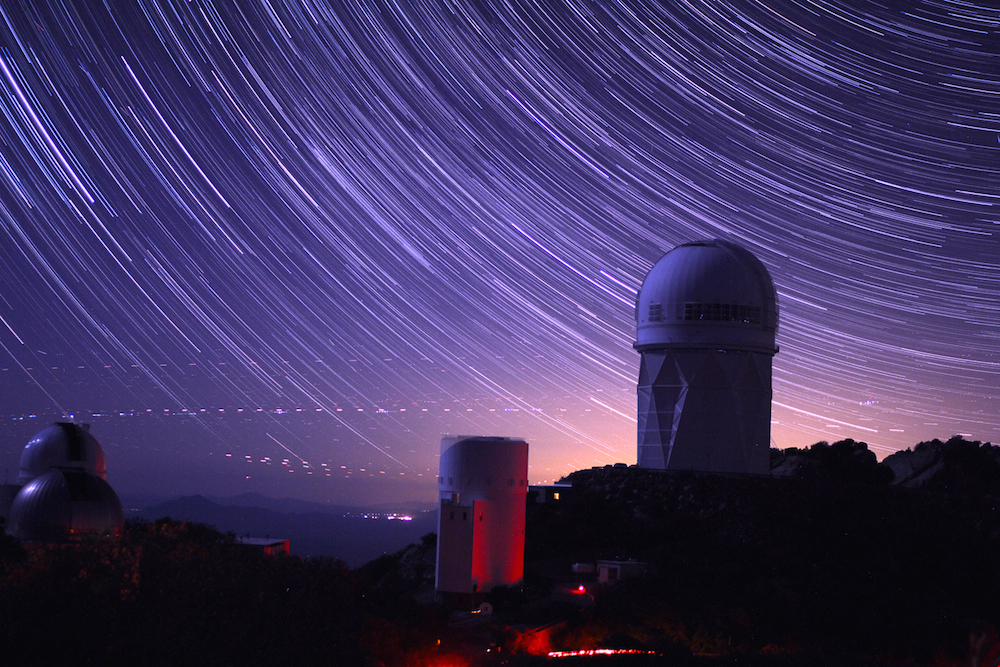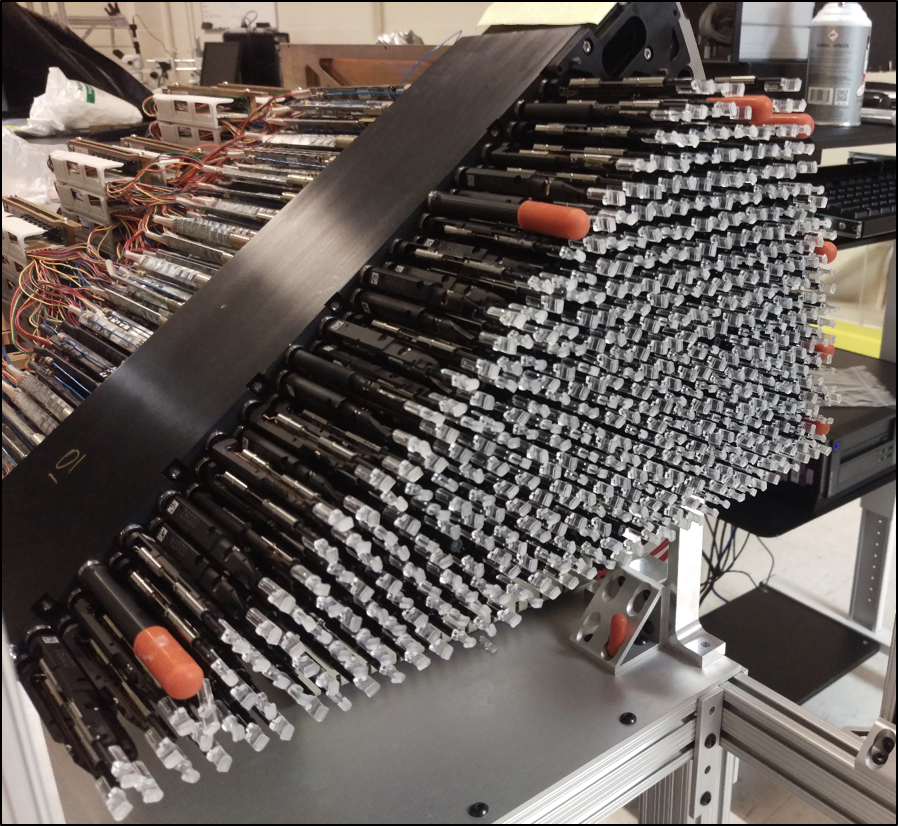Solving the Dark Energy Mystery: A New Assignment for a 45-Year-Old Telescope
Kitt Peak National Observatory Prepares for the Dark Energy Spectroscopic Instrument
Forty-five years ago this month, a telescope tucked inside a 14-story, 500-ton dome atop a mile-high peak in Arizona took in the night sky for the first time and recorded its observations in glass photographic plates.

Today, the dome closes on the previous science chapters of the 4-meter Nicholas U. Mayall Telescope so that it can prepare for its new role in creating the largest 3-D map of the universe. This map could help to solve the mystery of dark energy, which is driving the accelerating expansion of the universe.
The temporary closure sets in motion the largest overhaul in the telescope’s history and sets the stage for the installation of the Dark Energy Spectroscopic Instrument (DESI), which will begin a five-year observing run next year.

An instrument with five thousand eyes
DESI will use an array of 5,000 swiveling robots, each carefully choreographed to point a fiber-optic cable at a preprogrammed sequence of deep-space objects, including millions of galaxies and quasars, which are galaxies that harbor actively feeding, massive black holes.
The fiber-optic cables will carry the light from these objects to 10 spectrographs, which are tools that will measure the properties of this light and help to pinpoint the objects’ distance and the rate at which they are moving away from us. DESI’s observations will provide a deep look into the early universe, up to about 11 billion years ago.
The cylindrical, fiber-toting robots, which will be embedded in a rounded metal unit called a focal plane, will reposition to capture a new exposure of the sky roughly every 20 minutes. The focal plane is expected to be completed and delivered to Kitt Peak this year.
DESI will scan one-third of the sky and will capture about 10 times more data than a predecessor survey, the Baryon Oscillation Spectroscopic Survey (BOSS). That project relied on a manually rotated sequence of metal plates – with fibers plugged by hand into pre-drilled holes – to target objects.
Installation of DESI’s components is expected to begin soon and to wrap up in April 2019, with first science observations planned in September 2019.
Spanish participation
 The Institute of Astrophysics of Andalusia (IAA-CSIC) participates in DESI since the beginning of the project in 2010. "We have led the design and construction of a prototype for the development of fiber optic positioner robots, capable of reaching a precision of one micra, a size between ten and twenty times less than that of a cell", says Francisco Prada, researcher at the IAA and head of the regional group Granada-Madrid-Tenerife who participates in the DESI collaboration. "This instrumental development has been a milestone for our country, where we have competed at the highest level and involved Spanish companies", he adds.
The Institute of Astrophysics of Andalusia (IAA-CSIC) participates in DESI since the beginning of the project in 2010. "We have led the design and construction of a prototype for the development of fiber optic positioner robots, capable of reaching a precision of one micra, a size between ten and twenty times less than that of a cell", says Francisco Prada, researcher at the IAA and head of the regional group Granada-Madrid-Tenerife who participates in the DESI collaboration. "This instrumental development has been a milestone for our country, where we have competed at the highest level and involved Spanish companies", he adds.
The Granada-Madrid-Tenerife (GMT) group that participates in the DESI Collaboration is formed by a multidisciplinary team of scientists, engineers and technologists who has worked closely with companies in Spain and Europe to face the challenge posed by the development of the positioning robot of optical fibers and the focal plate for the DESI instrument. It is led by the Institute of Astrophysics of Andalusia (IAA-CSIC) and involved the Higher Polytechnic School of the Autonomous University of Madrid, the Institute of Theoretical Physics UAM-CSIC and the Institute of Astrophysics of the Canary Islands.
N. Fahim, F. Prada et al. "An 8-mm diameter Fiber Robot Positioner for Massive Spectroscopy Surveys". Monthly Notices of the Royal Astronomical Society. DOI: 10.1093/mnras/stv541
Instituto de Astrofísica de Andalucía (IAA-CSIC)
Unidad de Divulgación y Comunicación
Silbia López de Lacalle - sll[arroba]iaa.es - 958230532
http://www.iaa.es
http://www-divulgacion.iaa.es

